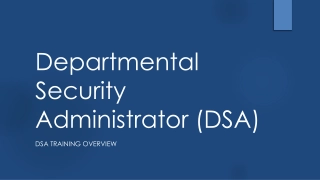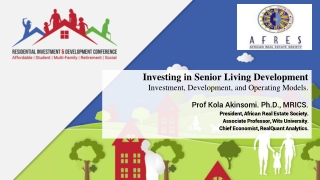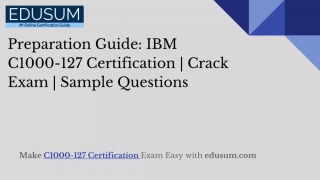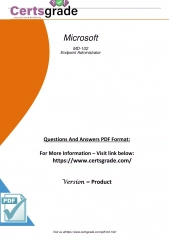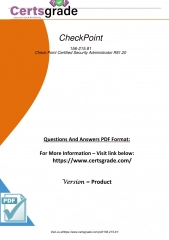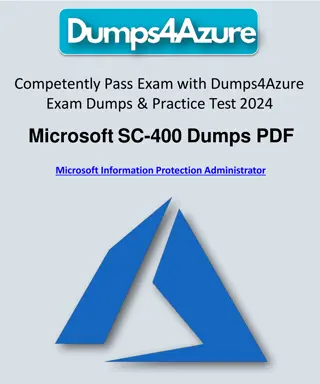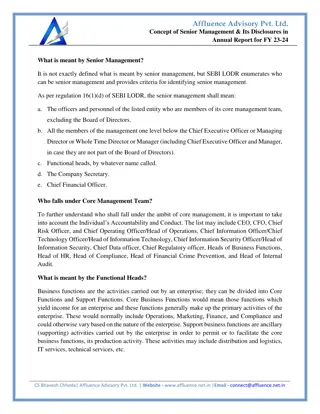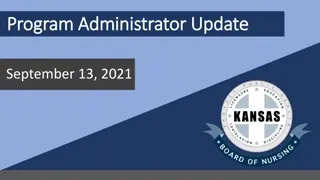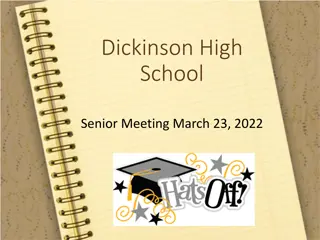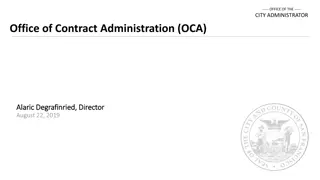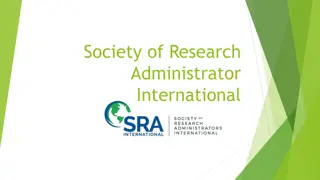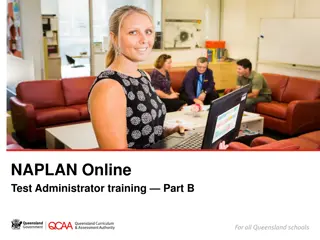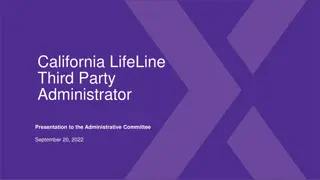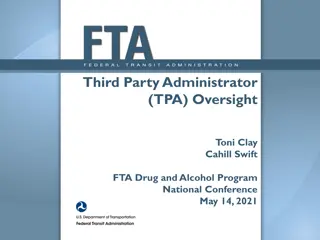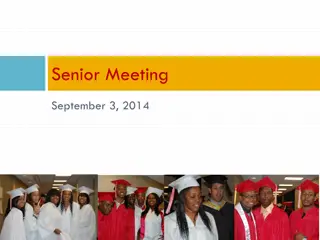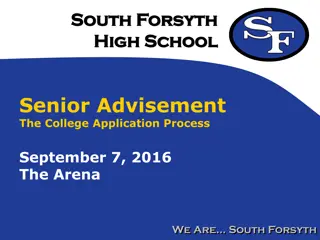Effective Senior Administrator Development Strategies
This paper, presented by Prince T. M. E. Dogun, Registrar of Ritman University, at a training workshop for Senior Assistant Registrars, focuses on essential strategies for the professional development of senior administrators. The presentation covers key aspects of senior administrative roles and provides valuable insights into enhancing leadership skills and operational efficiency in academic institutions.
Download Presentation

Please find below an Image/Link to download the presentation.
The content on the website is provided AS IS for your information and personal use only. It may not be sold, licensed, or shared on other websites without obtaining consent from the author.If you encounter any issues during the download, it is possible that the publisher has removed the file from their server.
You are allowed to download the files provided on this website for personal or commercial use, subject to the condition that they are used lawfully. All files are the property of their respective owners.
The content on the website is provided AS IS for your information and personal use only. It may not be sold, licensed, or shared on other websites without obtaining consent from the author.
E N D
Presentation Transcript
PAPER PRESENTED BY PRINCE T. M. E. DOGUN11 REGISTRAR, RITMAN UNIVERSITY, IKOT EKPENE, AKWA IBOM STATE. AT THE TRAINING WORKSHOP FOR SENIOR ADMINISTRATORS(SENIOR ASSITANT REGISTRARS PAPER PRESENTED BY PRINCE T. M. E. DOGUN11 REGISTRAR, RITMAN UNIVERSITY, IKOT EKPENE, AKWA IBOM STATE. AT THE TRAINING WORKSHOP FOR SENIOR ADMINISTRATORS(SENIOR ASSITANT REGISTRARS- - DEPUTY REGISTRARS) OF NIGERIAN UNIVERSITIES. DEPUTY REGISTRARS) OF NIGERIAN UNIVERSITIES.
To understand the definition of key concepts. To have an understanding of the University(campus) environment and the implications therefrom;
To identify different types or forms of conflicts . To identify sources of conflict. To identify and explain style/ strategies for dealing with conflict.
To identify barriers to resolving conflict. To identify and explain the critical skill required by the University Administrator in conflict resolution.
Maintaining Relevance Conclusion
When you have a conflict , that means that there are truths(realities) that have to be addressed on each side of the conflict. And when you have conflict,
then its an educational process to try and resolve the conflict. And to resolve that, you have to get both sides of the conflict involved so they can dialogue. D. Nuerata.
Peace is not the absence of conflict, it is the ability to handle conflict by peaceful means. Ronald Reagan In conflict resolution, don t find faults; find a remedy. Henry Ford
Peace is not the absence of conflict but the pursuit of creative alternatives for responding to conflict, alternatives to passive or aggressive responses, alternatives to violence. Dorothy Thompson
Conflict resolution is first Mindset and then Skills set. T. M. E. Dogun11. What we see depends mainly on what we look for. --- John Lubeck.
Critical (Vital) urgently needed; absolutely necessary. Skill Knowledge; understanding The familiar knowledge of any art or science, united with readiness and dexterity( adeptness, facility, deftness) in execution or performance or the application of the art and science to practical purposes.
Power to discern and execute; ability to perceive and perform; expertness, aptitude; as the skill of a mechanic, surgeon, etc. Exercise of ability. Solution. The art of analyzing a complex notion, or solving a vexed question or difficult problem.
Conflict 1. To contend; to engage in strife or opposition; to struggle. 2. To be in opposition; to be contrdictory 3. A state of opposition between person or ideas or interests. 4. An open clash between two opposing groups. (or individuals)
Administrator 1. One who administers affairs; one who directs, manages, executes or dispenses, whether civil, judicial, political, academic etc- a manager. 2. A decision maker 3. Someone who manages a government agency or department.
So we are going to be considering the urgently needed or absolutely necessary knowledge, understanding, the power to discern, the ability to perceive and perform,
the expertness or aptitude which an administrator(someone who manages a business, a decision maker, a director) needs to have, to enable him analyze a complex or difficult situation, problem or process arising from a contention, strife , opposition or clash between people or events in the organization (workplace) so that an amicable solution can be reached or the factions amicably reconciled.
When we use the term organization or Business we use it in the broadest term to include public and private enterprises, but in particularly, a formal environment.
The term administrator already indicates a formal setting with specific rules and conditions of engagement , defined processes and practices with reward and punishment systems, etc.
This is important because it suggests that some forms of conflict may not be expected to occur in such environment because of predetermined choices. expectations.
In a marriage or friendship setting for example, there s no telling what kind of conflict could occur , because the lines of engagement are not as formalized or rigid as in an organization or business even though both settings may be goal oriented.
Managing a campus in a general sense and in particular, the management of conflicts on campus (i.e.within the University) requires a proper understanding of the nature and dynamics of campus For Example;
1. A University campus or environment is a specific physical space within which the activities of the institution take place.
2. It is a place with human and social composition and dynamics a distinctive community of people with diversity of human characteristics, needs, aspirations and behavioral patterns
brought together principally for the purpose of creating and disseminating knowledge through the specific activities of teaching, learning ( including character formation, research and community service.
3. The nature and goals of a University as a knowledge community, its accumulated traditions as well as its administrative structure and culture will dictate certain forms of formal relationships
and demand certain types of psychological disposition and patterns of acceptable conduct as well as adherence to certain basic moral and ethical codes.
4. The core constituents of the campus are staff and students. However, on every campus will be found a variety of other people who not only utilize the facilities and services of the institution but who for various
reasons could be within the campus on a temporary or permanent basis- for example, members of staff families, services providers, hangers on, etc.
5. Related to the above point is the tendency for informal and even formal and semi-formal groups, alliances, linkages and identities to spring up based on diversity of perceived importance
and interests: tribal, religious, recreational interest within the campus and between its members and persons and interests outside it.
We can see from the foregoing that the University environment is complex and multi dimensional in nature but also highly structured and regulated. Inspite of these features, in an ideal situation, the University community should constitute a cohesive entity providing a holistic though not necessarily exclusive framework
within which its constituents live out the significant part of their daily experiences. However, this is not always the case as many issues and activities within the university serve to distract from the cohesiveness and communityness or the campus, one of which is the tendency as earlier pointed out, for informal, semi-formal and even formal groups,
linkages and identities to spring up based on diversity or perceived needs and interests. These groupings and relationships can and do
influence behavior and activity of individuals and can become the motivators of conflict. The matter then, is that even though by nature the University is highly structured
and regulated and designed to be a cohesive entity, the heterogenous nature of its membership, interests, groupings and alliances form the very bedrock for potential conflict.
Conflict therefore is inescapable whether at the micro or macro levels of the University no matter how well- structured the systems, processes and procedures are or how well articulated and clear one
the vision and mission statements and how widely practiced and upheld are the ethics and values governing behavior.
The reason is simple- human backgrounds are different and levels of understanding vary. Even lack of knowledge can be a source of conflict, not to mention divergence of interests- personal, group or organizational.
However, the rate at which conflicts occur, the nature of the parties involved and the magnitude of the conflicts can gravitate to a Crisis which if not well handled can lead to organizational breakdown or the shutdown of the institution for any length of time
1. Conflict is often associated with incompatible interests or hostile acts between individuals within a group or between groups. 2. Conflict may be constructive or destructive-
for example, an internal social conflict which concerns goals, values or interests that do no contradict the basic assumption upon which the relationship is founded, tends to be positively functional for the social structure.
Such conflict tends to make possible the re-adjustment of norms and power relations within groups in accordance with the felt needs of its individual members, sub- groups or groups.
On the other hand, internal conflict in which the contending parties no longer share the basic values upon which the legitimacy of the social system rests, threatens to disrupt the structure.
3. Conflict of interest between emloyers and employees can take various forms: trade disputes, strikes, work-to- rule, lockouts, absenteeism and high labour turn over.
Literature on the subject tend to identify four predominant conflicts in classical organizations:
1. Hierarchical Conflict- Between various levels in the organization- e.g, between Council and Management, Management and workers, between Management and students, between staff and students, between staff and government, between students and government.
2. Functional Conflict- Between various functional departments or arms of the organization e.g. between Bursary and the Registry, between academic and non- academic teaching units etc.
3. Line Staff Conflict- Results usually in situations in which staff personnel do not formally possess authority over line personnel.


